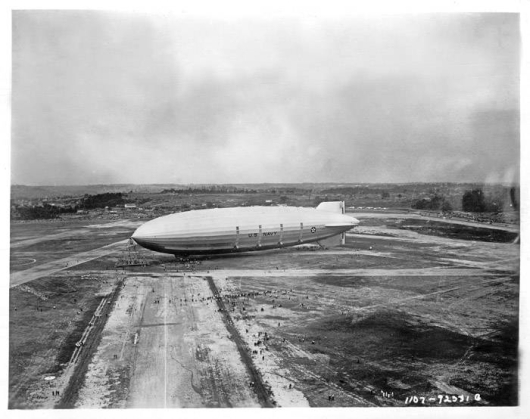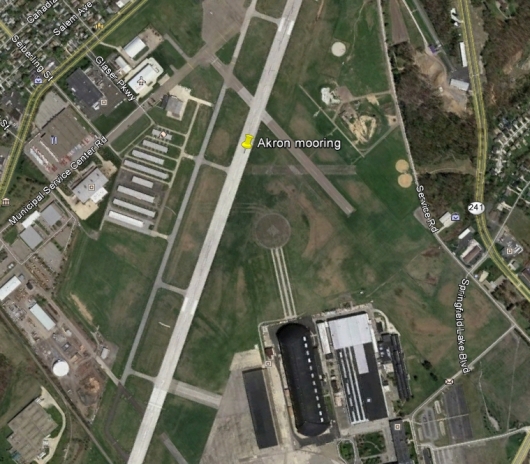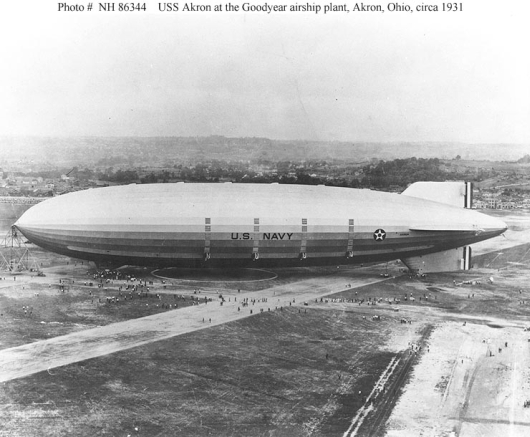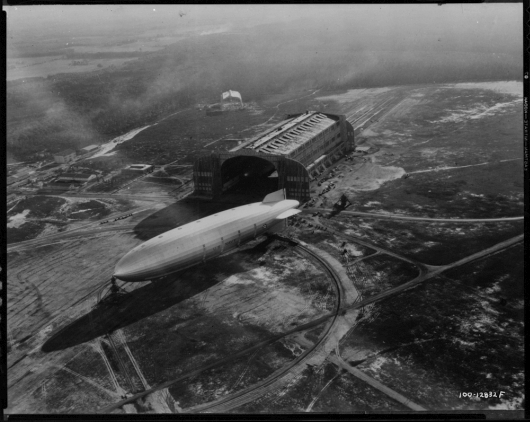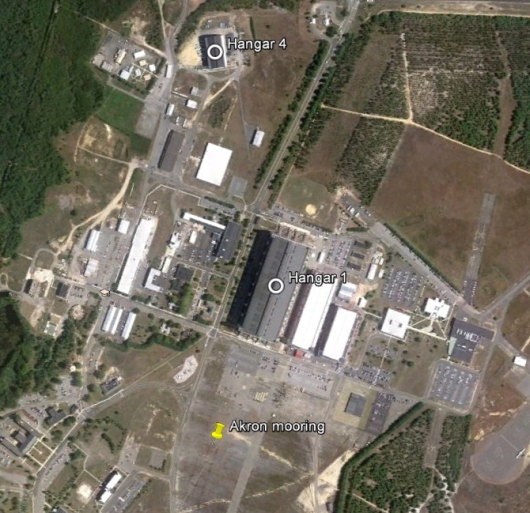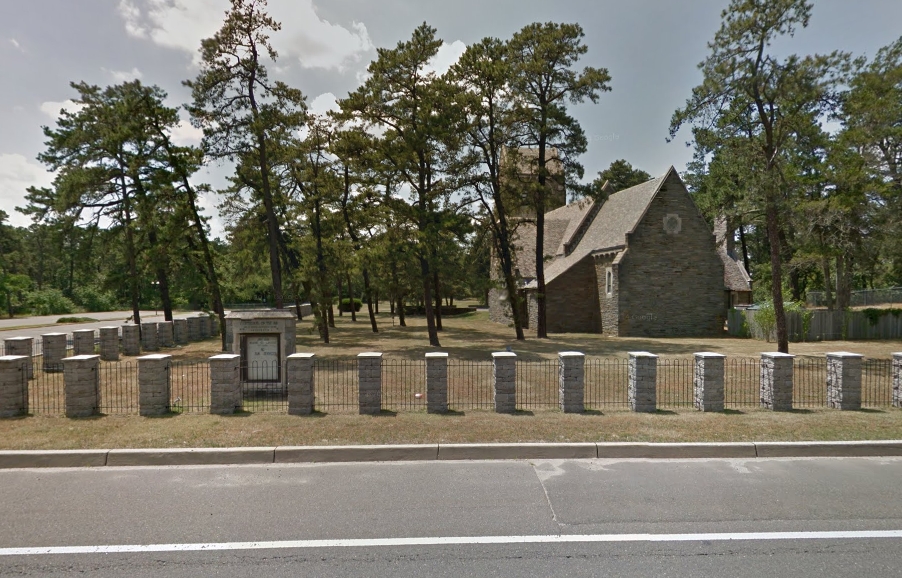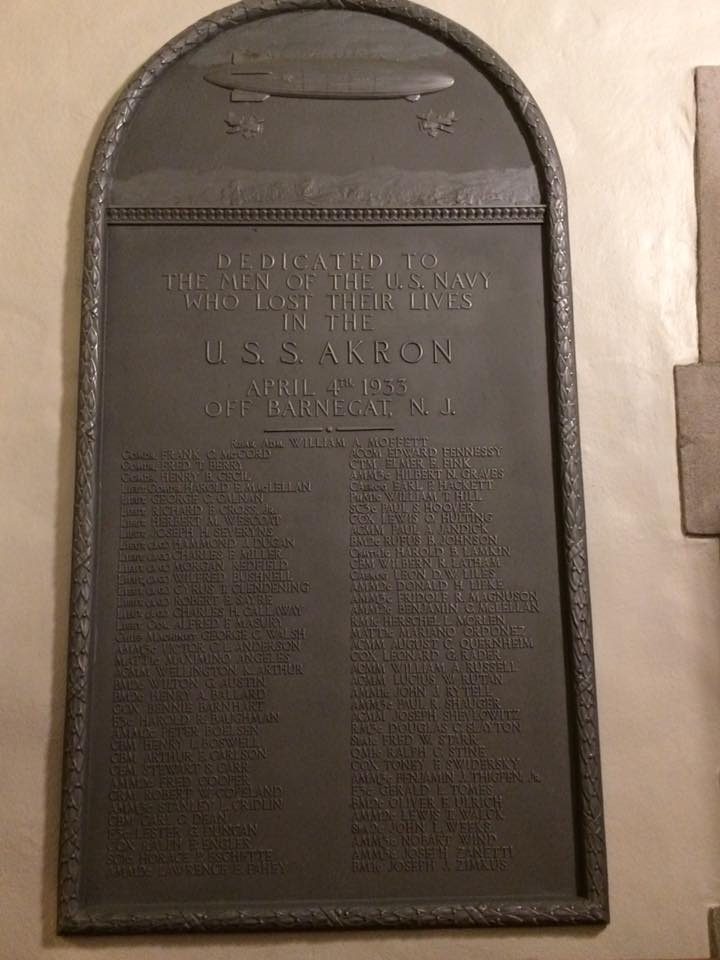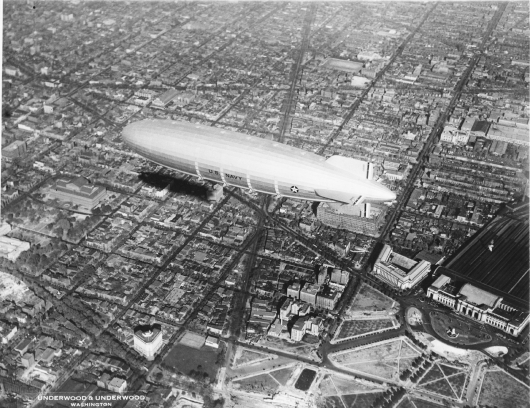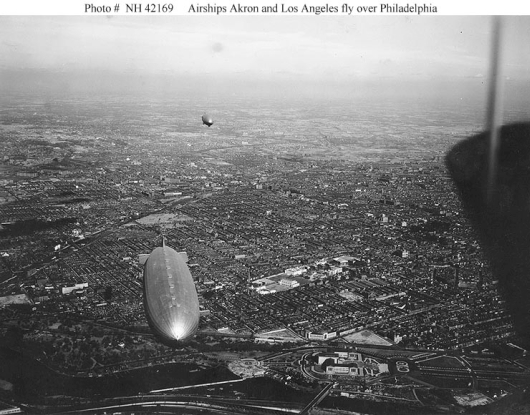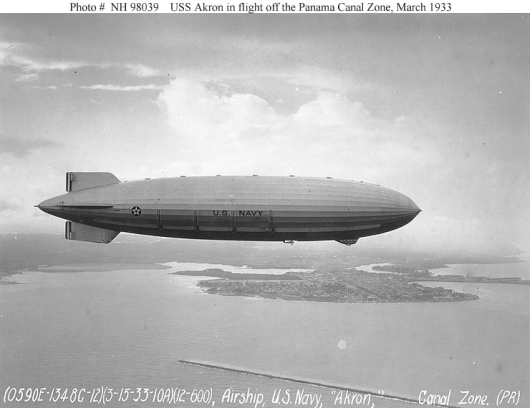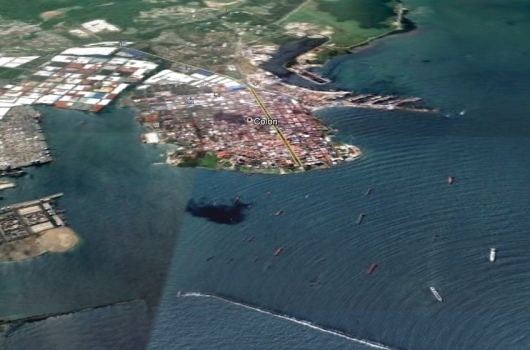Construction
The Akron was 785 feet long, about 20 feet shorter than the Hindenburg. Construction was by the Goodyear-Zeppelin Company at the Goodyear Airdock in Akron, Ohio. Construction of the Akron began in October, 1929, and she was launched and christened on August 8, 1931. The Akron relied on helium instead of the high flammable hydrogen, and this resulted in many unique design changes visible in photos of her. First, the engines themselves were housed inside the envelope of the airship, since the hot engines could not ignite the lifting gas! Moving the engines inside meant reduced air resistance adding to the Akron's top speed of 87 mph. Second, since helium was extremely valuable, rather than venting it to control altitude, each engine had giant evaporators over each engine to capture water vapor, the weight of which compensated some for the loss of weight due to burning off fuel. These evaporators are distinctive features along the sides of the envelope - 4 vertical columns over each propeller.
Operations
After her maiden flight and a few test flights around the Ohio, Michigan and Indiana areas, the Akron was delivered to the Navy at Lakehurst, NJ on Oct 27, 1931. In November, 1931 to the end of the year she made a series of flights for demonstration and performance information. In May, 1932, first tests of in-flight handling of the F9C Sparrowhawk, launching and capturing the small plane from its "trapeze". She made a trip to Sunnyvale, California later that month, and in the weeks on the West coast, participated in several exercises and further tests as a "flying aircraft carrier". (She carried 7 defensive machine guns!) She returned to Lakehurst in August, 1932, and resumed local operations and training flights. From January through March, 1933 she made several long distance flights including to Washington DC, Florida, Guantanamo Bay, Panama, and Balboa. She made her last flight on April 3-4, 1933.
Accident, February 22, 1932: The Akron was to have taken part in Fleet scheduled exercises, but an accident at Lakehurst prevented her participation. The airship was being taken from the hangar an its tail came loose from its moorings. A gale came up and, caught by the wind, the airship pivoted on its nose mooring and the lower tail fin struck the ground a couple of times. The worst damage was confined to the lower fin area which required extensive repair. Repairs were completed in two months and her on 28 April, she made a nine-hour flight with Rear Admiral Moffett and Secretary of the Navy Adams aboard.
As a result of this accident, a turntable with a walking beam on tracks powered by electric locomotives was designed and installed to secure the tail and turn the Akron even in high winds of up to 25 mph. Here is a short video clip of the accident:
Photo credit: #AIRBOYD, YouTube
Demise
The Akron was destroyed in an unfortunate incident off the coast of New Jersey, in the early morning hours of April 4th, 1933. Seventy-three of her 76 crew and passengers perished. She served the US Navy only 18 months. The Akron encountered severe weather soon after crossing the east coast of New Jersey on an intended mission to operate along the coast of New England. Between 10 PM, April 3rd and 12:30 AM April 4th, the crew fought violent wind gusts and attempted to maintain control. Ultimately a violent gust tore away the lower rudder cables and with the Akron seriously "nose up", her tail struck the ocean and the lower fin was torn off. The Akron then rapidly broke up and sank. 73 crewmembers and passengers died. There were 3 survivors.
Ignominious End
After the demise of the Akron, aside from the completion of the USS Macon, no further development of rigid airships took place in the US. Subsequent airships were of the much smaller, non-rigid design. After the demise of the Macon, the US rigid airship program ended, leaving only the German LZ-127 Graf Zeppelin, and LZ-129 Hindenburg. But the Hindenburg exploded May 1937, and the Graf Zeppelin was immediately removed from service and dismantled in March 1940. The era of the great airship thus came to an end. The Macon was the last rigid airship to be built in the USA.


